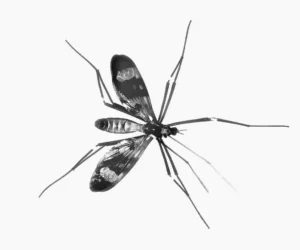Burns are one of the most common household injuries, affecting millions globally each year. Whether occurring in a professional setting or at home, effective and rapid treatment is crucial to prevent severe damage and promote healing. Burnshield® focuses on providing immediate care for burns, suitable for everyone from medical professionals to everyday individuals. In this article, we’ll explore the different types of burns and the essential first aid measures that can be taken.
Types of Burns

Burns can be classified into several types, each with its unique causes and characteristics:
- Thermal Burns: These are the most common types of burns, caused by exposure to hot objects, flames, steam, or hot liquids. Common household incidents, like touching a hot stove or spilling boiling water, can result in thermal burns.
- Chemical Burns: These occur when skin or eyes come into contact with an acidic or alkaline substance. Common culprits include household cleaners, industrial chemicals, and even some beauty products.
- Electrical Burns: These burns happen when an electric current passes through the body. Faulty electrical appliances, exposed wires, or power lines can cause these burns, which may not always be visible but can severely damage internal tissues and organs.
- Friction Burns: These are caused by contact with any hard surface such as roads (“road rash”), carpets, or mechanical equipment. Friction burns often occur in sports or motorcycle accidents when the skin is scraped against a rough surface.
- Radiation Burns: These burns are a result of prolonged exposure to ultraviolet rays from the sun or from artificial sources like tanning beds or during medical treatments such as radiation therapy for cancer.
Immediate Care for Burns
The initial treatment for burns is crucial and can significantly influence the healing process. Here are general steps to follow for immediate care:
- Stop the Burning Process: Remove the person from the heat source or stop the chemical reaction. For thermal burns, cool the burn under running water for 15-20 minutes. Do not use ice, as it can further damage the skin.
- Cover the Burn: Use a sterile dressing or a clean cloth. Burnshield® products, like their Hydrogel or specialized dressings, are excellent for covering the burn as they not only protect but also start the healing process by cooling and moisturizing the burn area.
- Avoid Breaking Blisters: Intact skin over a blister provides a natural barrier to infection. Breaking blisters can increase the risk of infection and slow the healing process.
- Seek Medical Help: Always seek professional medical help for severe burns, which include burns covering a large area, burns on sensitive areas such as the face, hands, feet, or genitals, or if the burn penetrates deep into the skin, showing features of a third-degree burn.
Special Considerations for Each Burn Type
- Thermal Burns: For minor thermal burns, after cooling the area, apply Burnshield® Hydrogel to soothe and moisturize the burn. For more severe burns, seek medical attention immediately.
- Chemical Burns: Quickly remove any contaminated clothing and rinse the skin under running water for at least 20 minutes. After initial flushing, applying Burnshield® can help soothe the burn before you get medical care.
- Electrical Burns: Due to the internal damage that can occur, it’s crucial to seek immediate medical attention after an electrical burn. Do not attempt to treat severe electrical burns on your own.
- Friction Burns: Clean the area with mild soap and water, and apply an antibiotic ointment. Cover with a clean bandage or Burnshield® dressing to reduce friction and keep the area moist.
- Radiation Burns: For radiation burns related to cancer treatment, keep the affected area clean and exposed to the air when possible. Use gentle moisturizers to soothe the skin, and avoid any sources of heat or direct sunlight. Monitoring and managing these burns should be done under the guidance of a healthcare provider.
Why Choose Burnshield®?
Burnshield® products are designed to provide immediate relief by cooling the burn, hydrating the injured area, and reducing the thermal damage. Their hydrogel, which is composed of 96% water and includes natural ingredients like Tea Tree Oil, is effective in minimizing the pain and promoting a conducive environment for healing. The clear, non-stick nature of the gel allows for continuous assessment without further irritating the burn.










